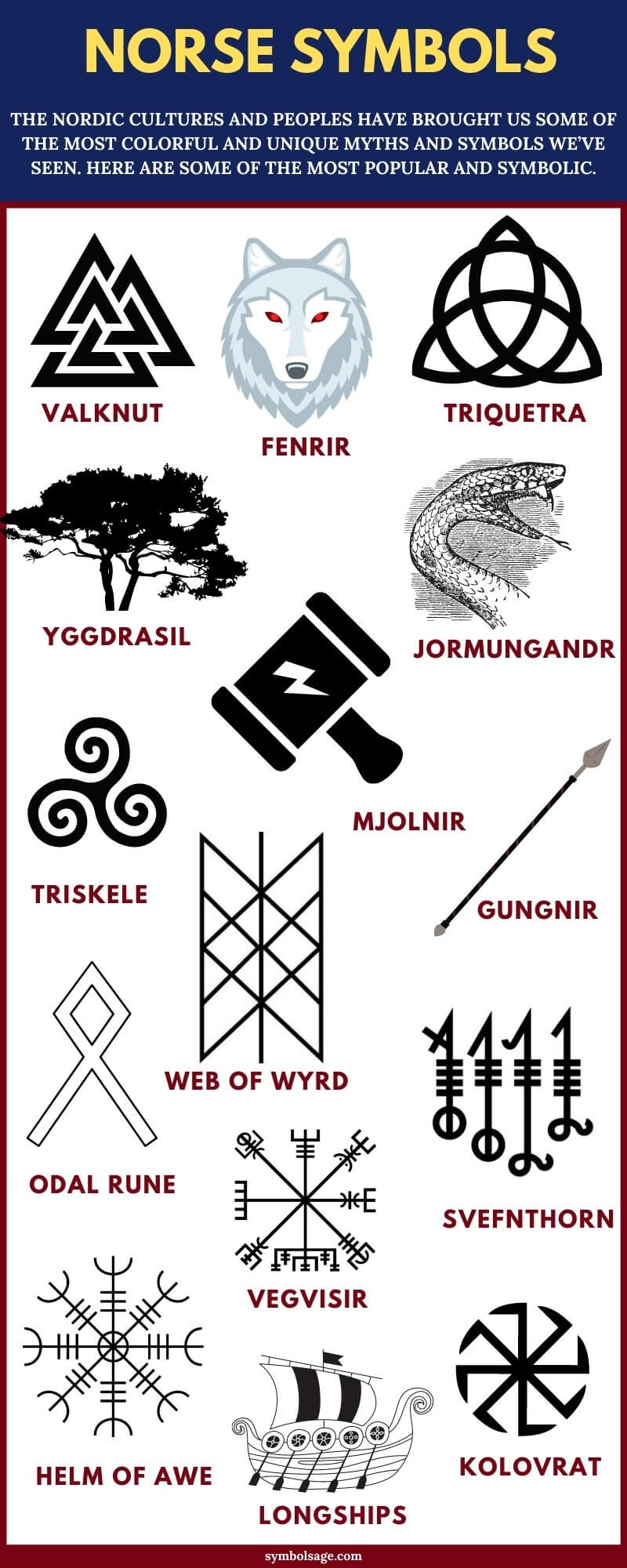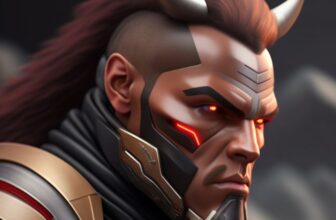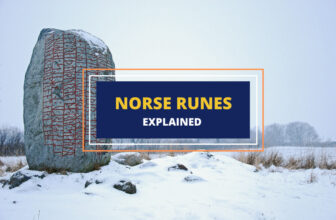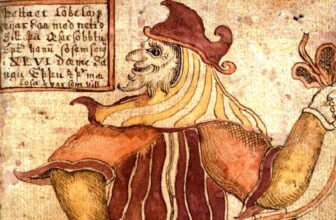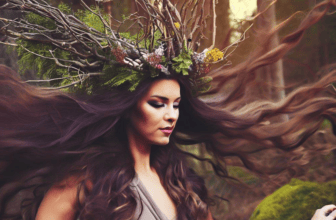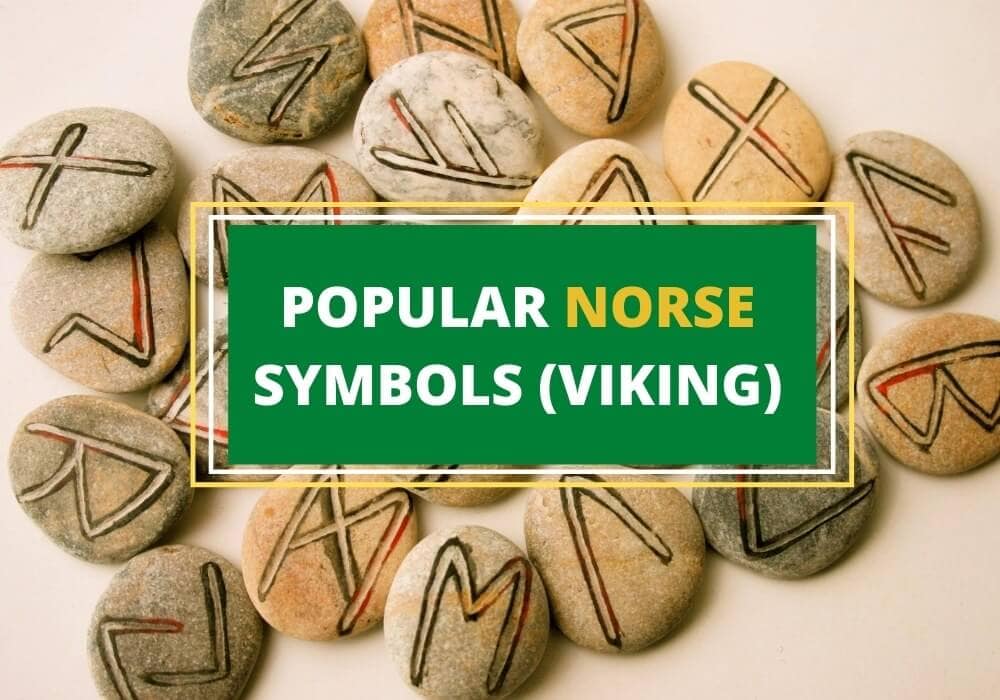
Table of Contents
The Nordic cultures and peoples have brought us some of the most colorful and unique myths and symbols we’ve seen. They’ve inspired lots of later art and religions and have become steeped in our pop-culture. While not usually thought of as philosophers, the Norse had a unique outlook on life and the world which is vividly represented by their runes and mythical symbols and figures.
Before we begin, it’s important to distinguish between Norse and Viking. Norse and Viking both refer to the same Germanic people, who spoke Old Norse and settled in Scandinavia. However, while Norse refers to the people in general, Viking refers to the Norsemen who were seafarers and warriors, and left their homelands to colonize and raid other lands.
Many of the symbols listed below are still used in a variety of ways, including in logos, jewelry, decorative items, fashion and pop culture.
Valknut
The Valknut is a geometrically intriguing symbol with a rather mysterious significance. Even the term “Valknut” is a contemporary name that was given to these three interlocking triangles, as the original name of the symbol is unknown.
As best as historians have managed to discern, the Valknut was used to represent the Norse and Viking warriors fallen in battle. The symbol was often used on burial memorials, on warriors’ shields and armor, and was also used in relation to Odin, the All-Father god who was also responsible for accepting the fallen warriors into Valhalla.
Overall, the Valknut is believed to symbolize fallen soldiers and a warrior’s death. As such, it’s a popular symbol of strength, bravery, fearlessness and battling evil.
Triquetra
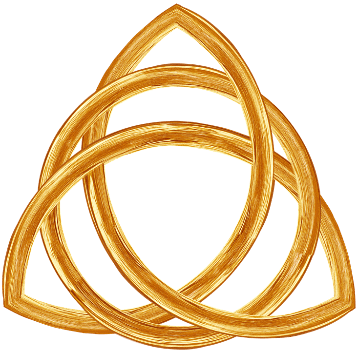
Also known as the Trinity Knot, the Triquetra symbol is comprised of three interlocking arcs with no beginning or end. In Norse culture, the Triquetra symbolized the eternal spiritual life which was also believed to have no beginning or end.
While the symbol was widespread through Nordic cultures and is quite similar to other Norse symbols such as the Valknut in its design, the Triquetra is believed to be a Celtic symbol originally. It’s likely that the Norse incorporated it into their own culture from the Celts after Viking raiders s began integrating with the Celtic people. The Triquetra was later adopted by Christianity where it was used to represent the Holy Trinity.
Yggdrasil
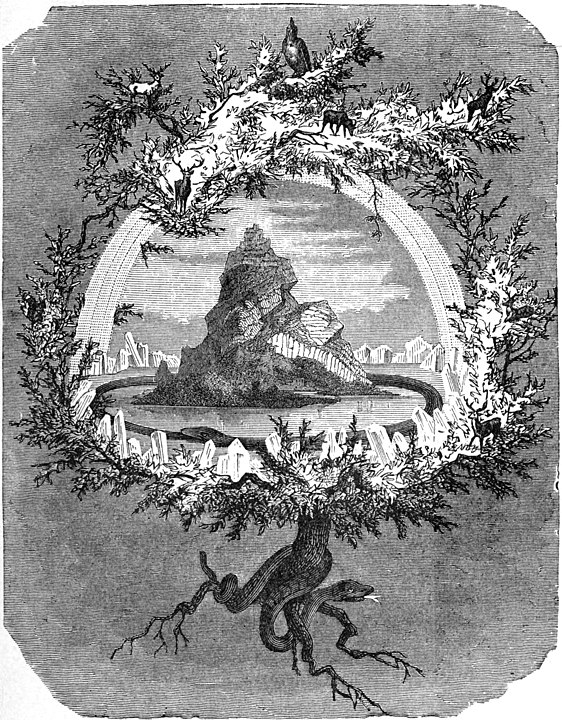
The Tree of Life or the World Tree, Yggdrasil is a cosmic tree in Norse mythology that is believed to connect the nine different realms or worlds together. From its branches to its roots, Yggdrasil was believed to connect Valhalla, Midgard (or Earth), Asgard, Hel, Svartalfheim, and the other realms. It was also thought to be inhabited by various creatures and monsters. Simply put, Yggdrasil symbolized the universe for the Nordic people. It’s one of the most important symbols of Norse mythology.
Fenrir
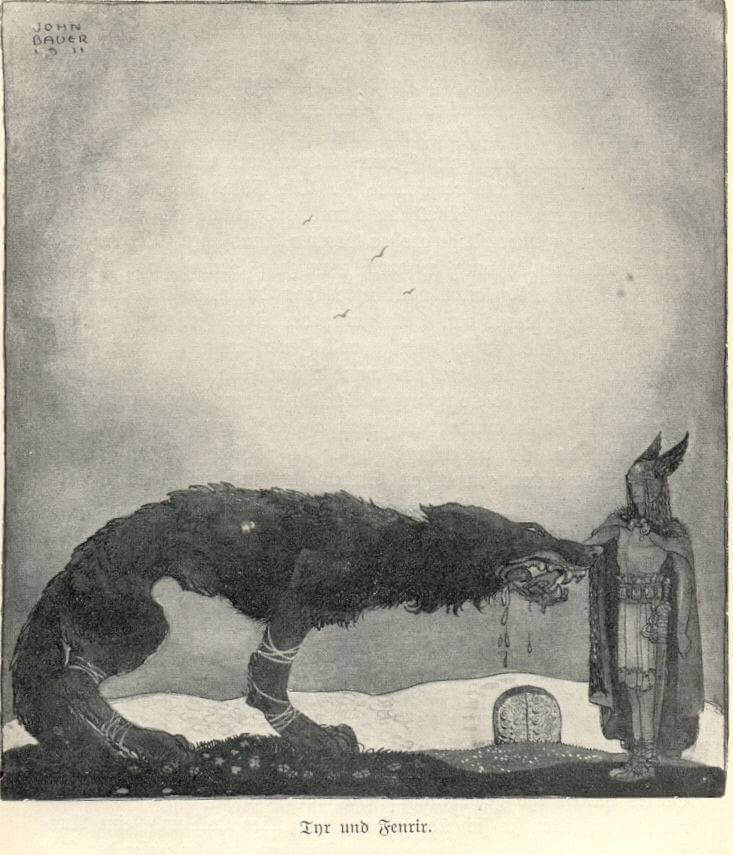
The Fenrir wolf in Norse myths is the son of the god Loki and the giantess Angrboða. His siblings were also the World serpent Jörmungandr and the goddess Hel. All three of them had their roles to play in Ragnarok, the Norse “End of days”, an apocalyptic event where the gods and all the heroes of Midgard would be defeated and the universe would begin again.
Fenrir’s role in Ragnarok was quite special as he was prophecized to kill the All-Father god Odin for chaining him to a rock for most of Fenrir’s life. Despite that, however, Fenrir is not so much a symbol of evil but rather a symbol of strength, retribution, ferocity, and destiny, as the Nordic people believed that what is to be will be. In modern days, the Fenrir wolf has been the template of countless literary wolfs and monsters and is still widely used as a symbol of strength and power.
Jörmungandr
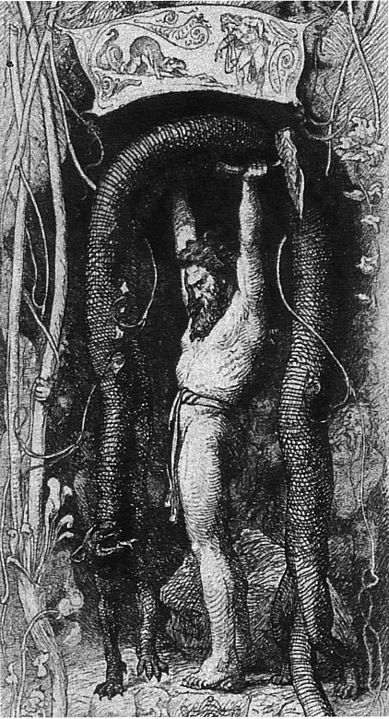
Jörmungandr, also known as the Midgard serpent or the Sea serpent, was a giant sea snake or dragon in Norse mythology and a child of the god Loki and the giantess Angrboða. The serpent was so large that it could encircle the entire world with its body and was usually portrayed biting its own tail. Jörmungandr was tossed into the seas upon its birth by the gods and was also prophecized to signal the beginning of Ragnarok, which would begin as soon as the serpent released its own tail.
During Ragnarok, Jörmungandr and Thor were meant to battle and kill each other while the world around them was ending. Because of its portrayal as a serpent circling around the world, Jörmungandr is quite similar to the Ouroboros myth as a symbol of life’s cyclical nature and the beginning and the end always being connected.
Jörmungandr is one of the two most famous dragons in Norse mythology together with Níðhöggr who was believed to live in the roots of the World tree and gnaw at them, slowly deteriorating the foundation of the world. While Níðhöggr is typically viewed as evil, however, Jörmungandr is traditionally viewed as just a vessel of destiny and inevitability.
Mjolnir
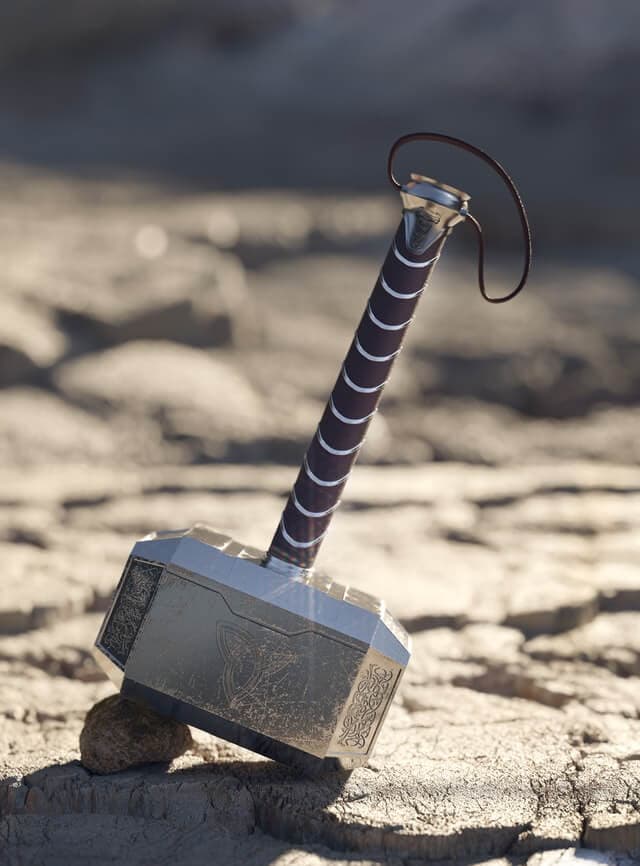
Mjolnir, or Mjölnir, is a very well-known symbol and mythical artifact today, largely thanks to modern pop-culture spin-offs of Nordic myths. In all its version, Mjolnir is the magical hammer of the Thunder god Thor, crafted by the dwarven blacksmiths in Svartalfheim. In Nordic legends, the hammer was created by the request of no other but the god of mischief Loki.
Naturally, Mjolnir is viewed as a symbol of strength and victory as it belonged to one of the most powerful gods in Norse mythology. It was also a symbol of fertility, however, as Thor was the patron god of farmers. Because of this, Mjolnir pendants were also used in wedding ceremonies.
Gungnir
Gungnir, also known as Odin’s Spear, is one of the most famous weapons in Norse mythology, just a step behind Thor’s hammer Mjolnir. In Norse myths, however, Gungnir was equally iconic if not more so. The mighty spear of the All-Father god Odin, Gungnir was crafted by the sons of Invaldi, a pair of dwarven blacksmiths in Svartalfheim. Gungnir was a magic spear that never missed its target and has become a symbol of courage, inspiration, skill, and wisdom.
One of the most famous myths of Gungnir and Odin was that of Odin’s sacrifice at Yggdrasil. In that myth, the All-Father stabbed himself through the chest with Gungnir and then hanged himself from the World tree for nine days and nights in order to order achieve wisdom and knowledge.
Triskele
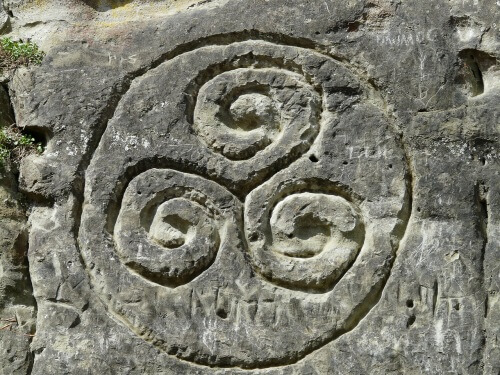
Often referred to as The Horns of Odin, the Triskele or the Triskelion is comprised of three interlocking horns.
Similar in its design to the valknut and the triquetra, the triskele also has a rather unclear meaning. It’s believed that it’s connected to Odin stealing the Mead of Poetry in Norse legends and so the horns are typically used as a symbol of Odin. The horns of the Triskele do have their individual names too – Óðrœrir, Boðn, and Són. The Triskele has become very significant in the Asatru faith and is typically used to symbolize the following of the Old Norse Ways.
Like the Triquetra, the Triskele is also associated with Celtic culture, and is believed to have originated in Celtic regions over 5000 years ago.
Helm of Awe

Also known as the Ægishjálmr, the Helm of Awe may look like a snowflake but it’s an ancient Icelandic symbol of victory and protection. The Helm of Awe was used in multiple Eddic poems and was worn by both warriors and even dragons. Some interpret the symbol to be an actual physical artifact that an unnamed viking wore in battle while others think it was a magical spell that cast an invisible sphere of protection around the warrior. Either way, today the symbol is often used on rings, earrings, and pendants as a protection charm.
Vegvesir
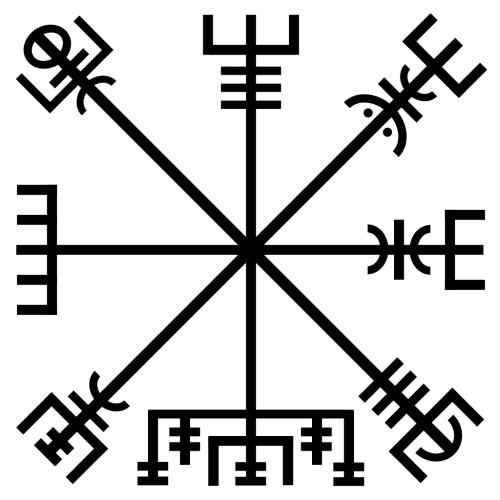
The Vegvesir is another Icelandic symbol believed to be a navigational tool, somewhat like a magical compass. The term Vegvisir literally means That Which Shows the Way and was used as a visual spell of protection against getting lost. It was mostly used at sea by Viking raiders and traders who often had to travel through the stormy waters of the Nordic Seas and the North Atlantic.
The Vegvesir wasn’t an actual physical compass – the Vikings used to navigate by the night sky’s stars instead. Some believe that the Vegvisir was inspired by the sunstone, a navigational tool made using a piece of crystal known as Iceland spar. As a symbol, however, the Vegvesir was often carved into the Viking longboats or on medallions and clothes. It symbolizes guidance, direction, stability and finding one’s way back.
Web of Wyrd
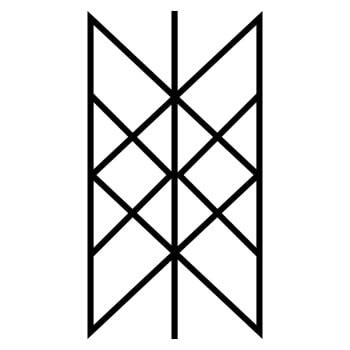
The Nordic people were staunch believers in fate and destiny. They were sure that there’s only one way the world’s history would turn out and that we all have a role to play in it. Instead of trying to change fate, it was every man and woman’s duty to fulfill their destiny as best and as honorably as they could, even if that destiny was to be grim.
This belief is best represented by the Web of Wyrd – a great tapestry woven by the three women, or Norns, at the base of the World Tree Yggdrasil. The Web includes nine interlocking lines with 9 being a magic number in Norse mythology. The symbol is believed to represent interconnection, destiny, fate and completion.
Viking Longships
The Viking longship boats are one of the many examples of ordinary Nordic items becoming so iconic through time that they’ve turned into instantly recognizable symbols. They had simple and effective but also very easily distinguishable designs, with elevated and curved noses and sails. Through the ages, these longboats had become symbols of the Viking raiders themselves and the terror they brought to people in Britain and the rest of Europe. Today, depictions of the Viking longboats are more a symbol of exploration and Nordic heritage.
Odal Rune (Othala)
This is one of the oldest and most well-known runes of ancient Norse. It comes from the oldest form of the runic alphabets – known as the Elder Futhark. The Odal rune is believed to represent inheritance, persistence and tradition and a strong connection to family. This makes the Odal rune a highly significant symbol with universal applicability.
Svefnthorn
The Svefnthorn is an intriguing Nordic symbol, believed to have the power to put a person to sleep. The symbol is simple in design, featuring four hooks or harpoons, placed side by side. It occurs in many Norse myths, playing an important role as the device used in making someone fall asleep. It can be argued that the Svefnthorn may have influenced tales such as Sleeping Beauty and Snow White. Today, the Svefnthorn is often viewed as a symbol of relaxation and sleep, with some keeping it as a protective amulet in the bedroom.
Kolovrat

This symbol typically features eight arms rotating in either a clockwise or anti-clockwise direction. It’s viewed as a version of the ancient Swastika symbol, which holds great symbolism in Eastern cultures but was tainted by the Nazis. The Kolovrat symbolizes the battle between good and evil, as well as concepts such as the cycle of life, truth, power and reincarnation. One modern day interpretation sees the Kolovrat as a symbol of the cross, representing Jesus conquering death.
Wrapping Up
Norse symbols are highly meaningful, representing important concepts of life and bringing the colorful Nordic myths alive. It’s no wonder, then, that these symbols continue to inspire and capture human imagination around the globe.
